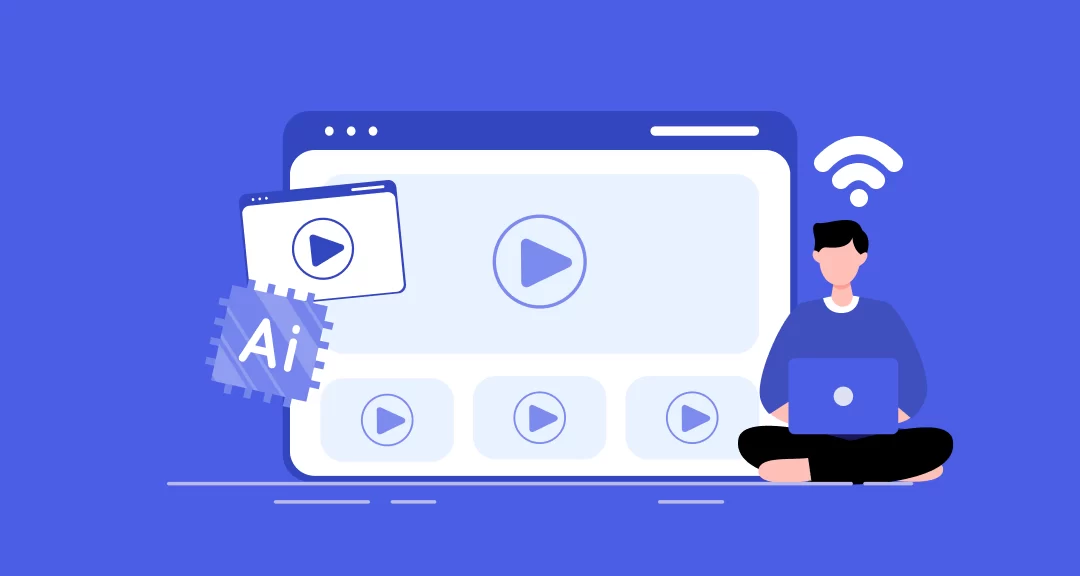The explosion of OTT (Over-the-Top) platforms has dramatically reshaped the entertainment landscape. With giants like Netflix, Amazon Prime Video, Disney+, and regional players investing heavily in content and technology, the competition is fierce. In this digital age, Artificial Intelligence (AI) has emerged as the key differentiator for OTT platforms, revolutionizing everything from content delivery to user engagement.
Let’s dive into 10 impactful ways AI is transforming OTT streaming platforms and helping them stay ahead of the curve.
1. Hyper-Personalized Content Recommendations
AI-powered recommendation engines are the backbone of user experience on OTT platforms. By analyzing users’ viewing history, preferences, demographics, and even the time they spend watching specific content, AI helps create a personalized list of shows and movies tailored to individual tastes.
For example, Netflix’s recommendation algorithm accounts for nearly 80% of the content watched on the platform. This level of personalization increases engagement and retention, ensuring users find something relevant every time they log in.
2. Dynamic Content Curation
AI doesn’t just stop at personalizing content for individuals. It also plays a critical role in dynamic content curation, adjusting recommendations based on changing viewer behavior and trends.
Machine learning models can detect shifts in popular genres, regional interests, or global events and curate collections accordingly. This dynamic nature ensures that platforms always feel fresh and in tune with the audience’s evolving preferences.
3. Optimizing Video Quality with Adaptive Streaming
AI is significantly improving streaming quality through adaptive bitrate streaming. These systems use real-time AI algorithms to assess a user’s internet speed and device performance, adjusting video resolution accordingly to prevent buffering.
This means smoother streaming experiences without manual adjustments, enhancing user satisfaction—especially in regions with fluctuating internet speeds.
4. Predictive Analytics for Content Acquisition
OTT platforms invest billions in content, and AI helps make smarter decisions with predictive analytics. By evaluating viewer trends, engagement metrics, and historical performance, AI can predict the success rate of new shows or genres in specific regions.
This allows platforms to greenlight the right projects or acquire licenses for shows that are likely to succeed, reducing the risk of content flops and maximizing ROI.
5. Automated Subtitling and Dubbing
AI-driven Natural Language Processing (NLP) and speech recognition have revolutionized subtitling and dubbing processes. Tools powered by AI can transcribe speech, translate dialogues, and even generate realistic dubbed audio in multiple languages.
This capability allows OTT platforms to scale their content across global markets faster and more efficiently, improving accessibility and viewer inclusivity.
6. Fraud Detection and Account Security
As subscription sharing and content piracy pose significant challenges to OTT businesses, AI steps in with advanced fraud detection. By monitoring unusual login patterns, device fingerprinting, and IP address inconsistencies, AI algorithms can identify and block unauthorized access.
This not only protects content but also encourages fair usage, improving revenue potential without compromising user experience.
Also Read: Magento vs Shopify: Which E-commerce Platform is Right for Your Business?
7. AI-Powered Content Creation and Editing
Generative AI is finding its way into the content creation pipeline. From generating scripts and storyboards to automating video edits, trailers, and promotional content, AI tools are streamlining creative workflows.
This helps production teams reduce turnaround time and focus on high-quality storytelling while AI handles repetitive or time-consuming tasks.
8. Real-Time Audience Insights and Engagement
OTT platforms use AI to gather real-time audience insights, such as drop-off rates, most-watched scenes, and binge-watching patterns. These analytics empower content creators and marketers to make data-driven decisions.
Moreover, AI-powered chatbots and virtual assistants on platforms improve user engagement by offering support, suggesting content, and resolving issues instantly, enhancing overall satisfaction.
Also Read:
9. Smart Ad Targeting and Monetization
For ad-supported OTT platforms, AI transforms how ads are delivered. AI-powered programmatic advertising targets users based on their behavior, location, preferences, and watch history.
This results in more relevant, less intrusive ads, boosting both user satisfaction and ad revenue. AI also helps optimize ad placements by determining the best moments during content playback for maximum impact.
10. Voice and Visual Search Capabilities
Traditional search functions are evolving thanks to AI. Platforms now offer voice and visual search, allowing users to speak their queries or upload images to find similar content. This feature uses NLP and image recognition to interpret queries more effectively.
For instance, a user could say, “Show me thriller movies with a strong female lead,” and AI would deliver precise results. This makes content discovery more intuitive and user-friendly.
Conclusion
The integration of AI in OTT streaming platforms is no longer optional—it’s a strategic necessity. From personalized recommendations to intelligent ad placements and predictive content insights, AI is enhancing the user experience, operational efficiency, and profitability of streaming services.
As AI continues to evolve, we can expect even more intelligent, immersive, and interactive OTT experiences in the near future. The platforms that effectively harness AI’s potential will not only retain loyal users but also lead the future of entertainment.

